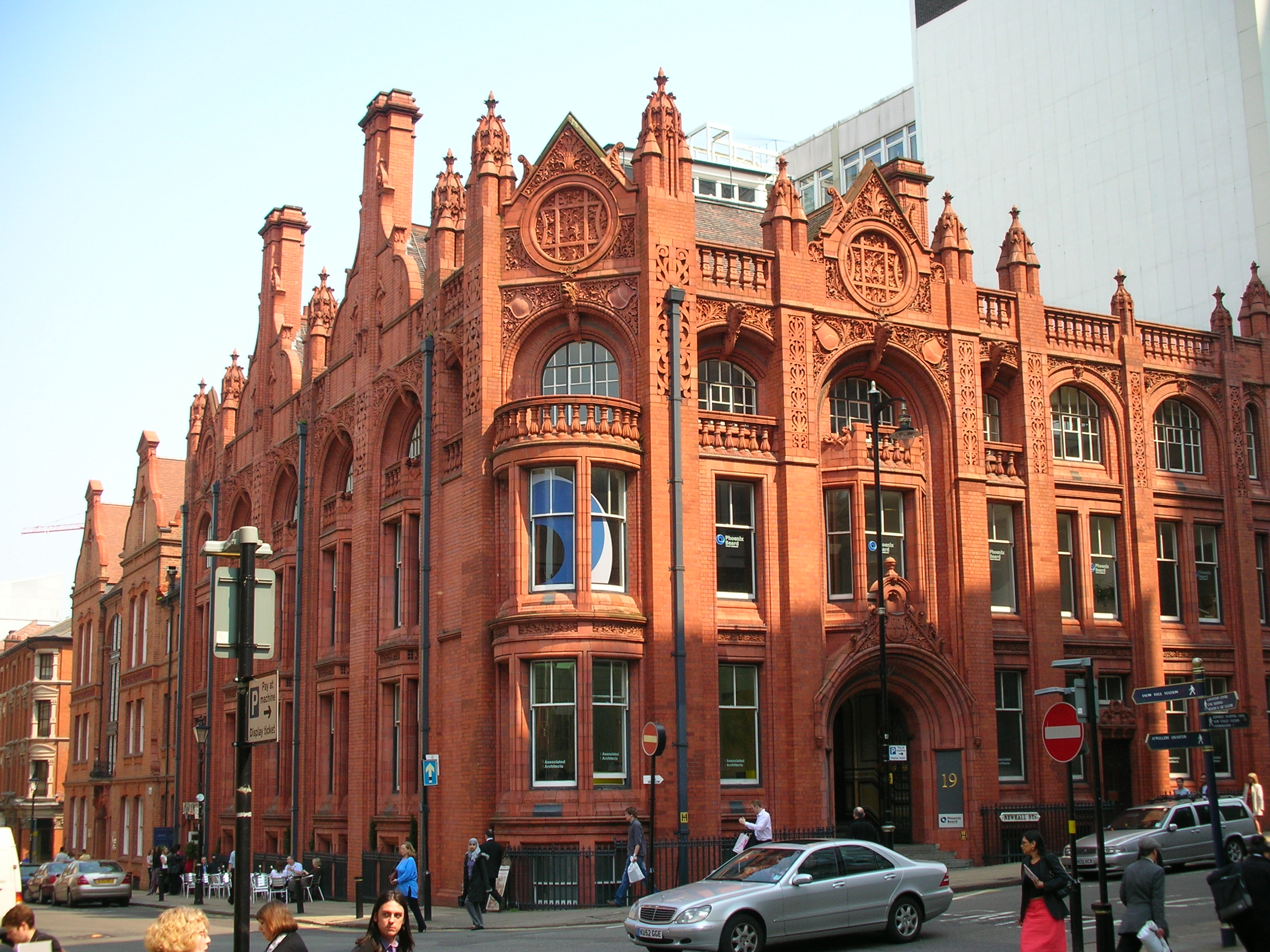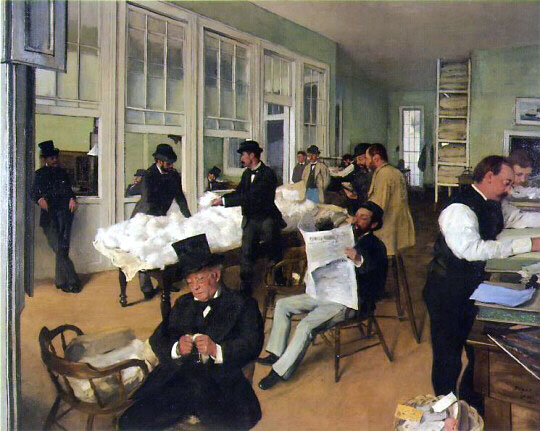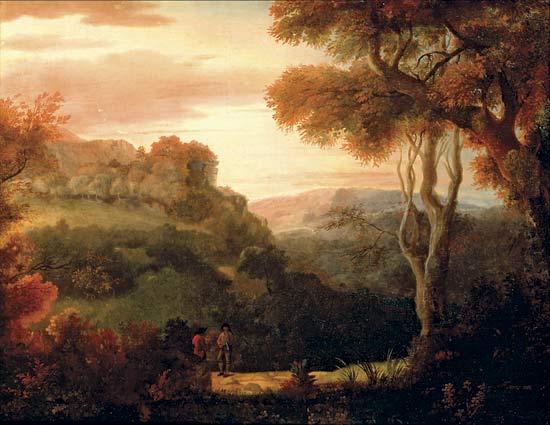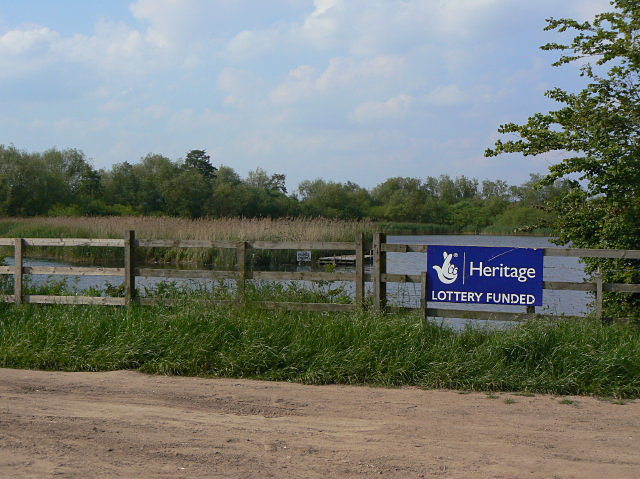|
Whitworth Art Gallery
The Whitworth is an art gallery in Manchester, England, containing over 60,000 items in its collection. The gallery is located in Whitworth Park and is part of the University of Manchester. In 2015, the Whitworth reopened after it was transformed by a £15 million capital redevelopment that doubled its exhibition spaces, restored period features and opened itself up to its surrounding park. The gallery received more than 440,000 visitors in its first year and was awarded the Art Fund's Museum of the Year prize in 2015. History The gallery was founded in 1889 by Robert Dukinfield Darbishire with a donation from Sir Joseph Whitworth, as "The Whitworth Institute and Park". The first building was completed in 1908. In 1958, the gallery became part of the Victoria University of Manchester. In October 1974, the gallery became a Grade II listed building. In October 1995, the mezzanine court in the centre of the building was opened. The new gallery, designed chiefly for the dis ... [...More Info...] [...Related Items...] OR: [Wikipedia] [Google] [Baidu] [Amazon] |
Manchester
Manchester () is a city and the metropolitan borough of Greater Manchester, England. It had an estimated population of in . Greater Manchester is the third-most populous metropolitan area in the United Kingdom, with a population of 2.92 million, and the largest in Northern England. It borders the Cheshire Plain to the south, the Pennines to the north and east, and the neighbouring city of Salford to the west. The city borders the boroughs of Trafford, Metropolitan Borough of Stockport, Stockport, Tameside, Metropolitan Borough of Oldham, Oldham, Metropolitan Borough of Rochdale, Rochdale, Metropolitan Borough of Bury, Bury and City of Salford, Salford. The history of Manchester began with the civilian settlement associated with the Roman fort (''castra'') of Mamucium, ''Mamucium'' or ''Mancunium'', established on a sandstone bluff near the confluence of the rivers River Medlock, Medlock and River Irwell, Irwell. Throughout the Middle Ages, Manchester remained a ma ... [...More Info...] [...Related Items...] OR: [Wikipedia] [Google] [Baidu] [Amazon] |
Architectural Terracotta
Architectural terracotta refers to a fired mixture of clay and water that can be used in a non-structural, semi-structural, or structural capacity on the exterior or interior of a building. Terracotta is an ancient building material that translates from Latin as "wikt:terracotta, baked earth". Some architectural terracotta is stronger than stoneware. It can be unglazed, painted, slip glazed, or Glazed architectural terra-cotta, glazed. Usually solid in earlier uses, in most cases from the 19th century onwards each piece of terracotta is composed of a hollow clay web enclosing a void space or cell. The cell can be installed in compression with Mortar (masonry), mortar or hung with metal anchors; such cells are often partially backfilled with mortar. Terracotta can be used together with brick, for ornamental areas; if the source of the clay is the same they can be made to harmonize, or if different to contrast. It is often a cladding over a different structural material. Hist ... [...More Info...] [...Related Items...] OR: [Wikipedia] [Google] [Baidu] [Amazon] |
Edgar Degas
Edgar Degas (, ; born Hilaire-Germain-Edgar De Gas, ; 19 July 183427 September 1917) was a French Impressionist artist famous for his pastel drawings and oil paintings. Degas also produced bronze sculptures, prints, and drawings. Degas is especially identified with the subject of dance; more than half of his works depict dancers. Although Degas is regarded as one of the founders of Impressionism, he rejected the term, preferring to be called a realist,Gordon and Forge 1988, p. 31 and did not paint outdoors as many Impressionists did. Degas was a superb draftsman, and particularly masterly in depicting movement, as can be seen in his rendition of dancers and bathing female nudes. In addition to ballet dancers and bathing women, Degas painted racehorses and racing jockeys, as well as portraits. His portraits are notable for their psychological complexity and their portrayal of human isolation. At the beginning of his career, Degas wanted to be a history painter, a callin ... [...More Info...] [...Related Items...] OR: [Wikipedia] [Google] [Baidu] [Amazon] |
Thomas Girtin
Thomas Girtin (18 February 17759 November 1802) was an England, English watercolour, watercolourist and etcher. A friend and rival of J. M. W. Turner, Girtin played a key role in establishing watercolour as a reputable art form. Life Thomas Girtin was born in Southwark, London, the son of a wealthy brushmaker of Huguenot descent. His father died while he was a child, and his mother then married a Mr Vaughan, a pattern-drawing, draughtsman. Girtin learnt drawing as a boy (attending classes with Thomas Malton), and was Apprenticeship, apprenticed to the topographical watercolourist Edward Dayes. Girtin is believed to have served out his seven-year term, although there are unconfirmed reports of clashes between master and apprentice, and even that Dayes had Girtin imprisoned as a refractory apprentice. Dayes did not appreciate his pupil's talent, and he was to write dismissively of Girtin after his death. While a teenager, Girtin became friends with the young J. M. W. Turner. Th ... [...More Info...] [...Related Items...] OR: [Wikipedia] [Google] [Baidu] [Amazon] |
John Robert Cozens
John Robert Cozens (1752 – 14 December 1797) was a British draftsman and painter of romantic watercolour landscapes. Cozens executed watercolors in curious atmospheric effects and illusions which had an influence on Thomas Girtin and J. M. W. Turner. His poetic work included Alpine views and a sense of vastness. John Constable described Cozens as "the greatest genius that ever touched landscape." In June 2010 Cozen's ''Lake Albano'' (c.1777) sold at auction, at Sotheby's in London, for £2.4 million, a record for any 18th-century British watercolour. Biography The son of the Russian-born drawing master and watercolourist Alexander Cozens, John Robert Cozens was born in London. He studied under his father and began to exhibit some early drawings with the Society of Artists in 1767. In 1776 he displayed the large oil painting, ''A Landscape with Hannibal in His March Over the Alps, Showing to His Army the Fertile Plains of Italy'' (now lost) at the Royal Academy in Lon ... [...More Info...] [...Related Items...] OR: [Wikipedia] [Google] [Baidu] [Amazon] |
Alexander Cozens
Alexander Cozens (1717–23 April 1786) was a British landscape painter in watercolours, born in Saint Petersburg, Russia. He taught drawing and wrote treatises on the subject, evolving a method in which imaginative drawings of landscapes could be worked up from abstract blots on paper. His son was the artist John Robert Cozens. Life Alexander Cozens was born in Saint Petersburg, Tsardom of Russia, Russia. Widely mistaken to be a natural son of Peter the Great, Emperor Peter I of Russia and a British woman — Mary Davenport — from Deptford, he was, in fact, the son of Richard Cozens (1674–1735), who worked for Peter I as a shipbuilder. The emperor was the godfather of Alexander.; text online at He was educated in England from 1727, but later returned to Russia. In 1746 he sailed from Saint Petersburg to Italy, where he spent two years before travelling onward to England. While in Rome, he worked in the studio of the French landscape painter, Claude-Joseph Vernet. Bet ... [...More Info...] [...Related Items...] OR: [Wikipedia] [Google] [Baidu] [Amazon] |
Thomas Gainsborough
Thomas Gainsborough (; 14 May 1727 (baptised) – 2 August 1788) was an English portrait and landscape painter, draughtsman, and printmaker. Along with his rival Sir Joshua Reynolds, he is considered one of the most important British artists of the second half of the 18th century. He painted quickly, and the works of his maturity are characterised by a light palette and easy strokes. Despite being a prolific portrait painter, Gainsborough gained greater satisfaction from his landscapes. He is credited (with Richard Wilson (painter), Richard Wilson) as the originator of the 18th-century British landscape school. Gainsborough was a founding member of the Royal Academy of Arts, Royal Academy. Youth and training Gainsborough was born in Sudbury, Suffolk, Sudbury, Suffolk, the youngest son of John Gainsborough, a weaver and maker of woollen goods, and his wife Mary, sister of the Reverend Humphry Burroughs. One of Gainsborough's brothers, Humphrey Gainsborough, Humphrey, is said t ... [...More Info...] [...Related Items...] OR: [Wikipedia] [Google] [Baidu] [Amazon] |
RIBA National Award
RIBA National Awards are part of an awards program operated by the Royal Institute of British Architects, also encompassing the Stirling Prize, the European Award and the International Award. The National Awards are given to buildings in the UK which are "recognised as significant contributions to architecture" which are chosen from the buildings to receive an RIBA Regional award. The shortlist for each year's Stirling Prize is picked from recipients of that year's National Awards. Award recipients 2008 The following buildings won a National Award in 2008: *BBC Scotland at Pacific Quay * Pier Art Centre * Hilton Tower *Manchester Civil Justice Centre *The Belgrade Theatre * Accordia * North Wall Arts Centre * East Beach Cafe *Adelaide Wharf * National Tennis Centre *Royal Festival Hall *The Sackler Crossing * St Marylebone Church of England School Performing Arts Facility * Terminal 5, Heathrow Airport * Wembley National Stadium * Westminster Academy at the Naim Dangoor Centr ... [...More Info...] [...Related Items...] OR: [Wikipedia] [Google] [Baidu] [Amazon] |
Heritage Lottery Fund
The National Lottery Heritage Fund, formerly the Heritage Lottery Fund (HLF), distributes a share of National Lottery funding, supporting a wide range of heritage projects across the United Kingdom. History The fund's predecessor bodies were the National Land Fund, established in 1946, and the National Heritage Memorial Fund, established in 1980. The current body was established as the "Heritage Lottery Fund" in 1994. It was re-branded as the National Lottery Heritage Fund in January 2019. Activities The fund's income comes from the National Lottery, which is managed by Allwyn Entertainment. Its objectives are "to conserve the UK's diverse heritage, to encourage people to be involved in heritage and to widen access and learning". As of 2019, it had awarded £7.9 billion to 43,000 projects. In 2006, the National Lottery Heritage Fund launched the Parks for People program with the aim to revitalize historic parks and cemeteries. From 2006 to 2021, the Fund had granted £2 ... [...More Info...] [...Related Items...] OR: [Wikipedia] [Google] [Baidu] [Amazon] |
RIBA Competitions
RIBA Competitions is the Royal Institute of British Architects' unit dedicated to organising architectural and other design-related competitions. Architectural design competitions are used by an organisation that plans to build a new building or refurbish an existing building. They can be used for buildings, engineering work, structures, landscape design projects or public realm artworks. A competition typically asks for architects and/or designers to submit a design proposal in response to a given brief. The winning design will then be selected by an independent jury panel of design professionals and client representatives. The independence of the jury is vital to the fair conduct of a competition. The objective of a competition is to explore a range of different design options to select the best response to the design brief, which would not be possible by pre-selecting one architect. The competitions process is often used to generate new ideas, create blue-sky thinking, stim ... [...More Info...] [...Related Items...] OR: [Wikipedia] [Google] [Baidu] [Amazon] |
Whitworth Gallery Extension (16967657572)
Whitworth may refer to: Places United Kingdom *Whitworth, County Durham, a former civil parish in England ** Whitworth Hall, County Durham *Whitworth, Lancashire, a town in England *Whitworth Art Gallery, an art gallery in Manchester, England * Whitworth Gardens, Manchester *Whitworth Hall, Manchester, part of the University of Manchester * Whitworth Park, Manchester *Whitworth Street, Manchester Canada *Whitworth, Quebec, an Indian reserve in Canada Other * Whitworth Ridge, Prince Charles Mountains, Mac. Robertson Land, Antarctica People * Whitworth (surname) Other uses *Whitworth rifle, a British made rifle used by the Confederacy in the American Civil War * 70-pounder Whitworth naval gun and 120-pounder Whitworth naval gun, naval guns made on a similar principle * Baron Whitworth, two titles in the Peerage of Ireland * Whitworth University, a private, liberal-arts institution in Spokane, Washington * Whitworth Park Academy, a secondary school in Spennymoor, County Durham, Engl ... [...More Info...] [...Related Items...] OR: [Wikipedia] [Google] [Baidu] [Amazon] |
Parapet
A parapet is a barrier that is an upward extension of a wall at the edge of a roof, terrace, balcony, walkway or other structure. The word comes ultimately from the Italian ''parapetto'' (''parare'' 'to cover/defend' and ''petto'' 'chest/breast'). Where extending above a roof, a parapet may simply be the portion of an exterior wall that continues above the edge line of the roof surface, or may be a continuation of a vertical feature beneath the roof such as a fire wall or party wall. Parapets were originally used to defend buildings from military attack, but today they are primarily used as guard rails, to conceal rooftop equipment, reduce wind loads on the roof, and to prevent the spread of fires. Parapet types Parapets may be plain, embattled, perforated or panelled, which are not mutually exclusive terms. *Plain parapets are upward extensions of the wall, sometimes with a coping at the top and corbel below. *Embattled parapets may be panelled, but are pierced, if not ... [...More Info...] [...Related Items...] OR: [Wikipedia] [Google] [Baidu] [Amazon] |








